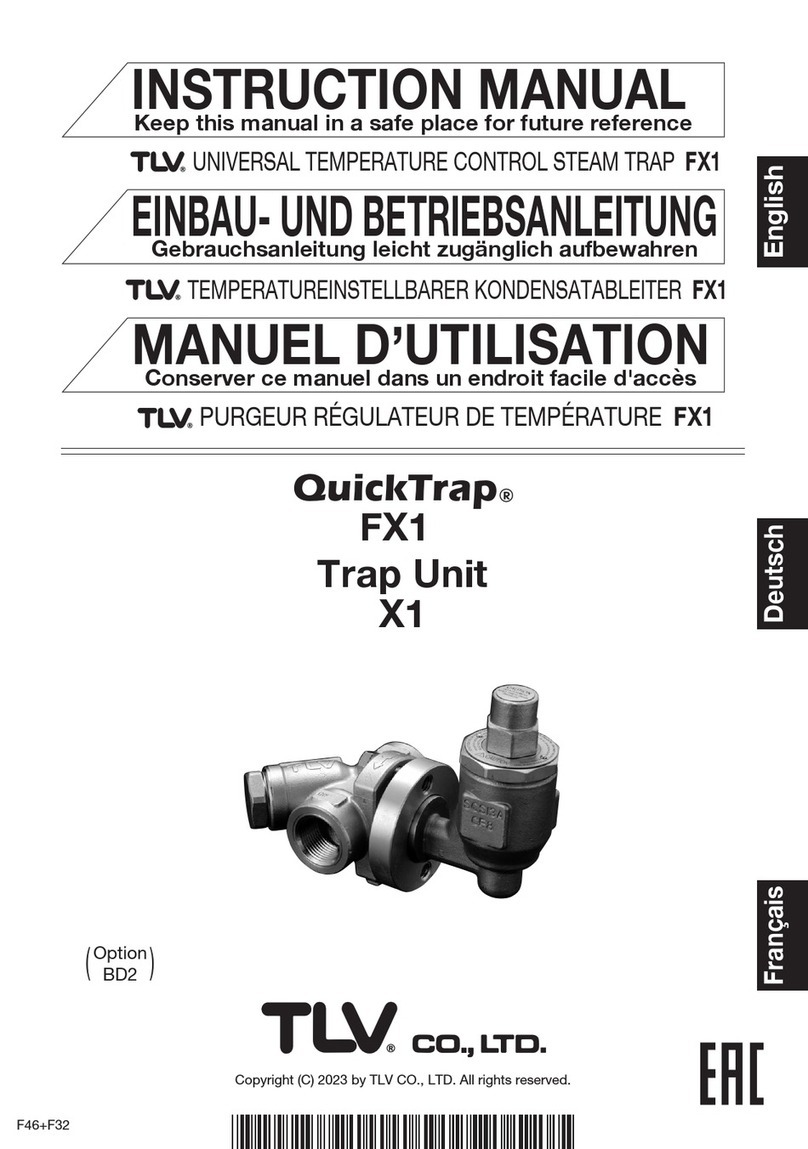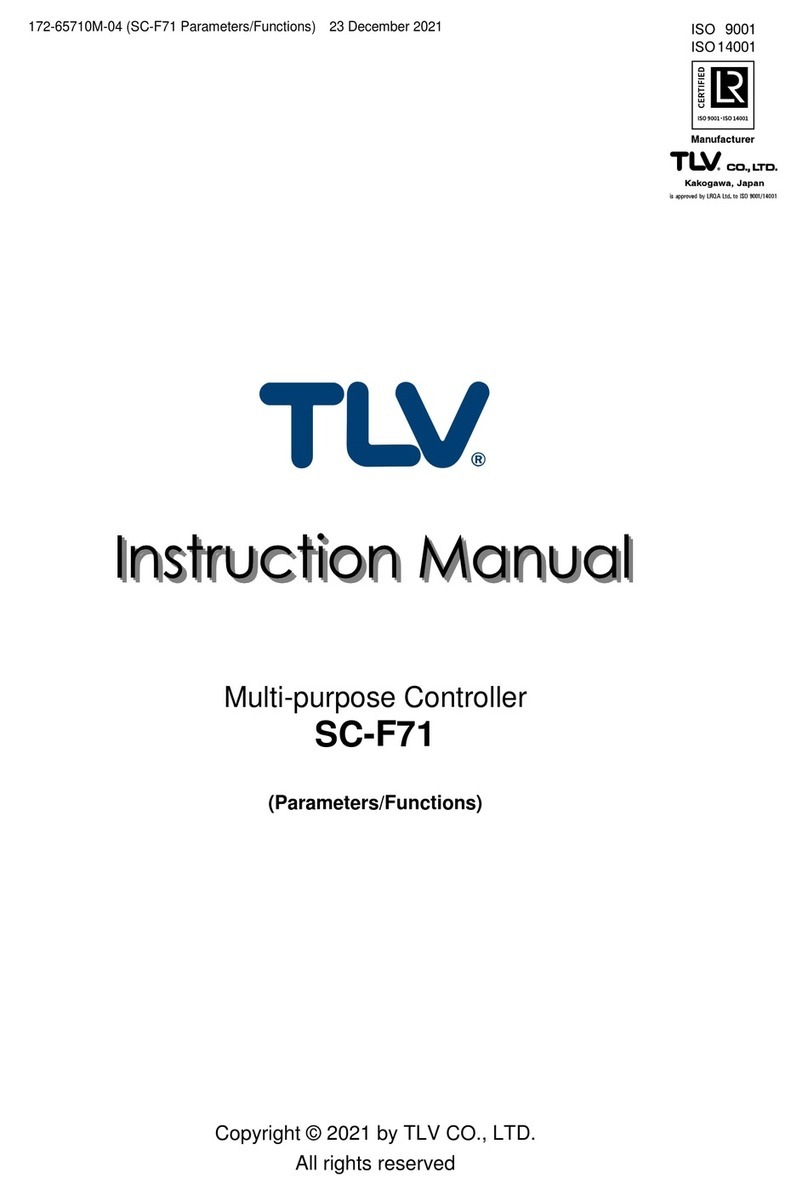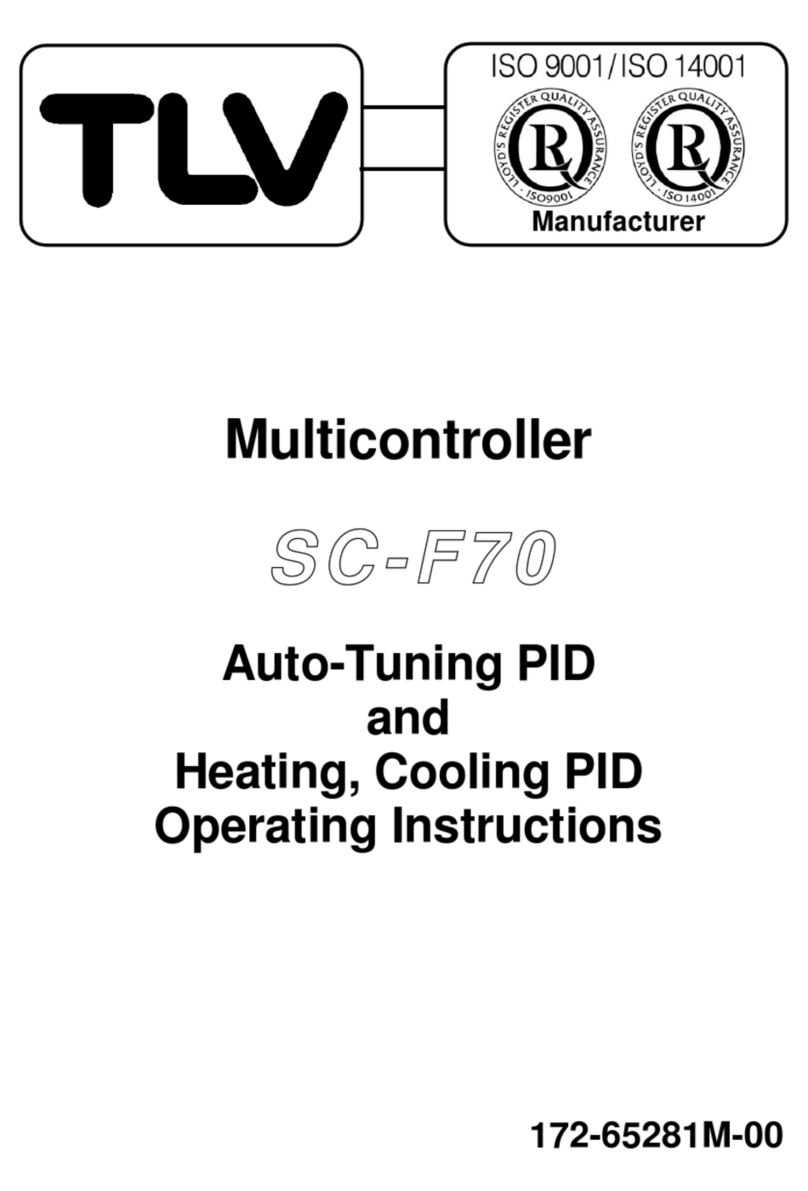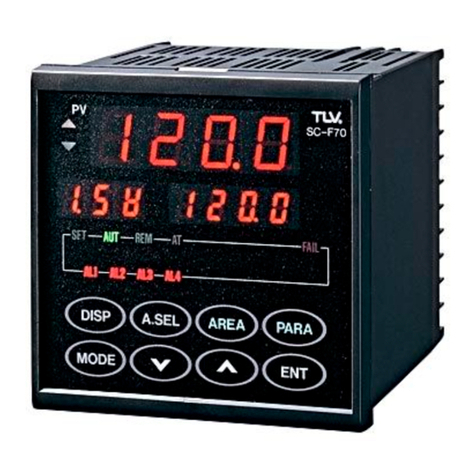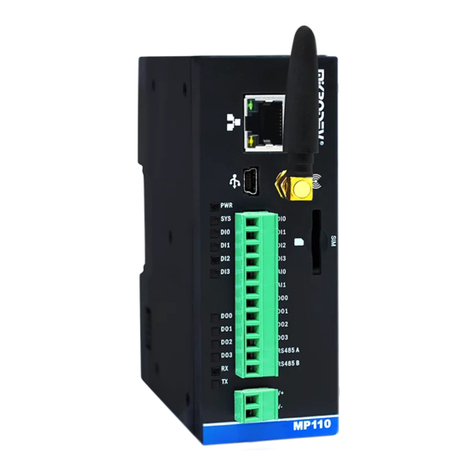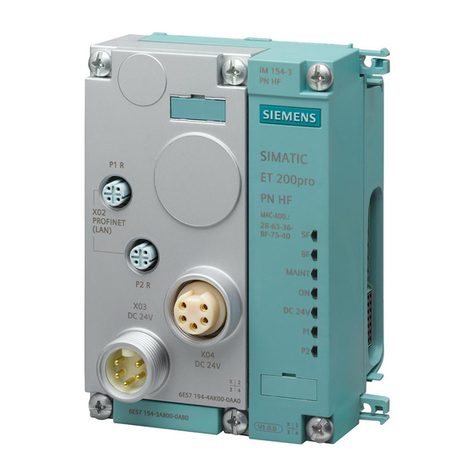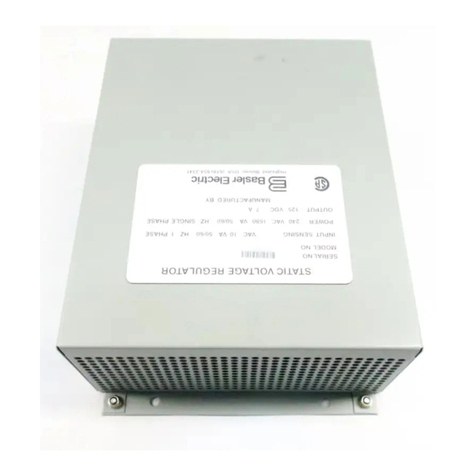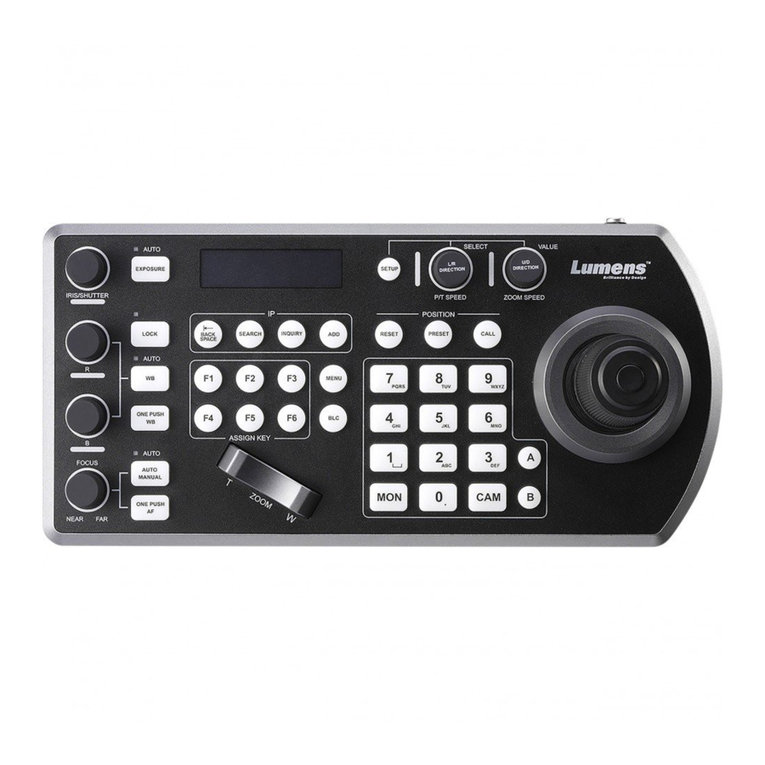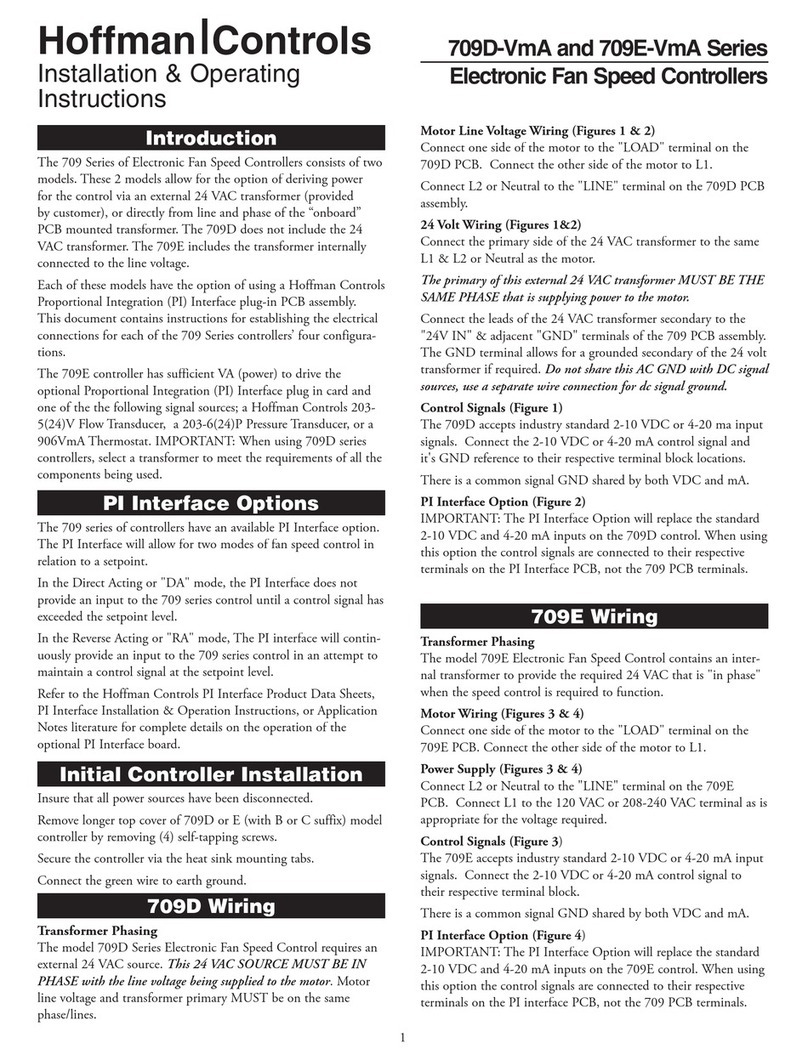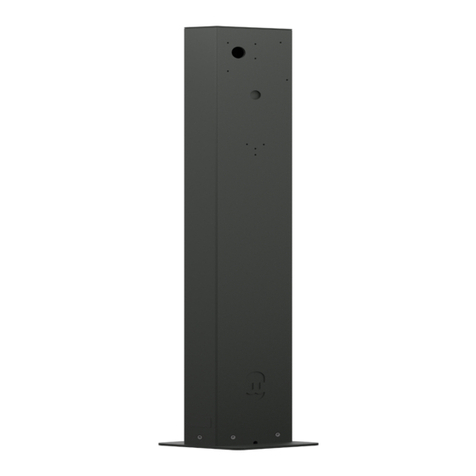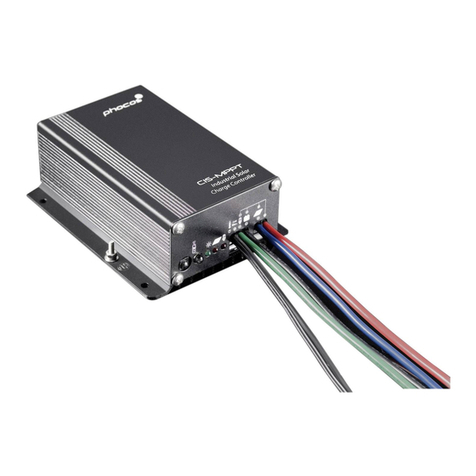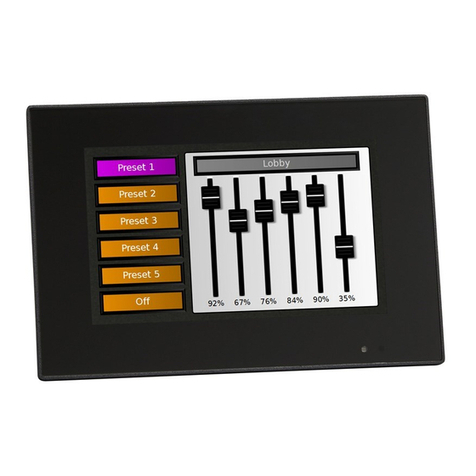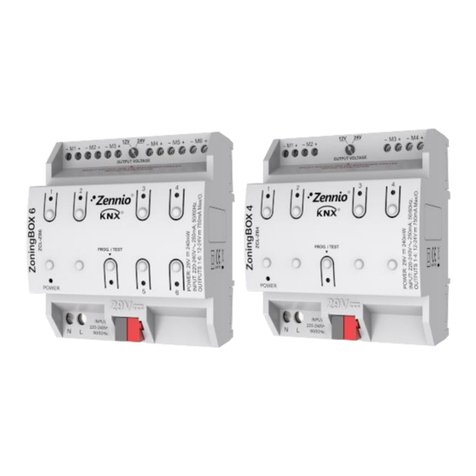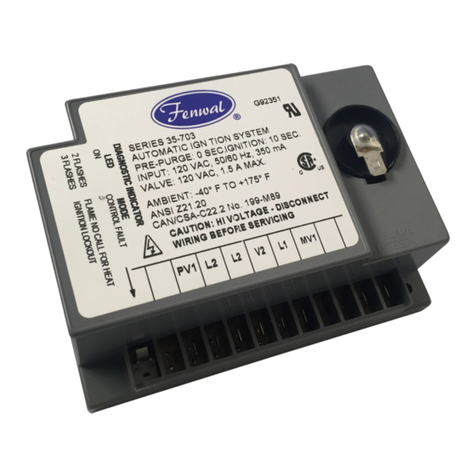TLV SC-F71 User manual

172-65711M-04 (SC-F71 Communication) 24 December 2021
Multi-purpose Controller
SC-F71
Communication
Copyright © 2021 by TLV CO., LTD.
All rights reserved

172-65711M-04 (SC-F71 Communication) 24 Dec 2021
1
Contents
Introduction..............................................................................................2
Safety Considerations .............................................................................3
Notice ......................................................................................................5
Notice Regarding the Export Trade Control Order (Japan).....................5
Disposal...................................................................................................5
Symbols...................................................................................................6
Pictorial Symbols (safety symbols).............................................................6
Character Symbols .....................................................................................6
Abbreviation symbols..................................................................................7
Screens used in this manual.......................................................................7
Document Configuration..........................................................................8
About this Manual....................................................................................9
1. Overview............................................................................................10
2. Wiring................................................................................................12
2.1 Wiring Cautions ..................................................................................12
2.2 Wiring for Host Communication..........................................................13
2.3 Connections for Loader Communication ............................................17
3. Parameter Setting..............................................................................19
3.1 Setting of Communication Parameter.................................................19
3.2 Communication Requirements ...........................................................22
4. Original Communication Protocol......................................................24
4.1 Polling.................................................................................................24
4.2 Selecting.............................................................................................30
5. Modbus Protocol................................................................................34
5.1 Message Format.................................................................................34
5.2 Function Code ....................................................................................35
5.3 Communication Mode.........................................................................35
5.4 Slave Responses................................................................................36
5.5 Calculating CRC-16............................................................................37
5.6 Register Read and Write ....................................................................40
5.7 Caution for Handling Communication Data.........................................42
5.8 How to use Modbus data mapping .....................................................43
5.9 How to Use Memory Area Data..........................................................45
6. Communication Data List ..................................................................49
6.1 Structure of the original communication/Modbus data map................49
6.2 How to read the table..........................................................................50
6.3 Original Communication/Modbus Data...............................................52
7. Troubleshooting...............................................................................129
7.1 Original Communication ...................................................................130
7.2 Modbus.............................................................................................131
8. Specifications ..................................................................................132
8.1 Original Communication ...................................................................132
8.2 Modbus.............................................................................................132
8.3 Loader Communication.....................................................................133
TLV EXPRESS LIMITED WARRANTY...............................................134
Service.................................................................................................136

172-65711M-04 (SC-F71 Communication) 24 Dec 2021
2
Introduction
Thank you for purchasing the TLV multi-purpose controller.
This product has been thoroughly inspected before being shipped from the factory.
When the product is delivered, before doing anything else, check the specifications
and external appearance to make sure nothing is out of the ordinary. Also be sure to
read this manual carefully before use and follow the instructions to be sure of using
the product properly.
If detailed instructions for special order specifications or options not contained in this
manual are required, please contact TLV for full details.
This instruction manual is intended for use with the model(s) listed on the front cover.
It is necessary not only for installation but for subsequent maintenance,
disassembly/reassembly and troubleshooting. Please keep it in a safe place for
future reference.
Microsoft Windows is a trademark of Microsoft Corporation (in the United States and other
countries).
MODBUS is a registered trademark of Schneider Electric SA.
All companies and product names mentioned are trademarks or registered trademarks of
the respective companies [owners].

172-65711M-04 (SC-F71 Communication) 24 Dec 2021
3
Safety Considerations
Read this section carefully before use and be sure to follow the instructions.
Installation, inspection, maintenance, repairs, disassembly, adjustment and valve
opening/closing should be carried out only by trained maintenance personnel.
The precautions listed in this manual are designed to ensure safety and prevent
equipment damage and personal injury. For situations that may occur as a result
of erroneous handling, three different types of cautionary items are used to
indicate the degree of urgency and the scale of potential damage and danger:
DANGER, WARNING and CAUTION.
The three types of cautionary items above are very important for safety: be sure to
observe all of them as they relate to installation, use, maintenance, and repair.
Furthermore, TLV accepts no responsibility for any accidents or damage occurring
as a result of failure to observe these precautions.
Symbols
Indicates a DANGER, WARNING or CAUTION item.
DANGER
Indicates an urgent situation which poses a threat of death or
serious injury
WARNING
Indicates that there is a potential threat of death, serious injury or
the risk of electrocution, burns or other situations which pose a
danger to the life or health of the user
CAUTION
Indicates that there is a possibility of injury or equipment/product
damage
WARNING
To prevent injury to persons, damage to the instrument and the
equipment, a suitable external protection device shall be
required.
All wiring must be completed before power is turned on to
prevent electric shock, fire or damage to the instrument and the
equipment.
This instrument must be used in accordance with the
specifications to prevent fire or damage to the instrument and
the equipment.
This instrument is not intended for use in locations subject to
flammable or explosive gases.
Do not touch high-voltage connections such as power supply
terminals, etc. to avoid electric shock.
TLV is not responsible if this instrument is repaired, modified or
disassembled by other than factory-approved personnel.
Malfunction may occur and warranty is void under these
conditions.
Continued on the next page

172-65711M-04 (SC-F71 Communication) 24 Dec 2021
4
CAUTION
This product is intended for use with industrial machines, test
and measuring equipment. (It is not designed for use with
medical equipment and nuclear energy plant.)
This is a Class A instrument. In a domestic environment, this
instrument may cause radio interference, in which case the user
may be required to take additional measures.
This instrument is protected from electric shock by reinforced
insulation. Provide reinforced insulation between the wire for
the input signal and the wires for instrument power supply,
source of power and loads.
Be sure to provide an appropriate surge control circuit
respectively for the following:
- If input/output or signal lines within the building are longer than
30 meters.
- If input/output or signal lines leave the building, regardless the
length.
This instrument is designed for installation in an enclosed
instrumentation panel. All high-voltage connections such as
power supply terminals must be enclosed in the instrumentation
panel to avoid electric shock to operating personnel.
All precautions described in this manual should be taken to
avoid damage to the instrument or equipment.
If the equipment is used in a manner not specified by the
manufacturer, the protection provided by the equipment may be
impaired.
All wiring must be in accordance with local codes and regulations.
To prevent instrument damage as a result of failure, protect the
power line and the input/output lines from high currents with a
suitable overcurrent protection device with adequate breaking
capacity such as a fuse, circuit breaker, etc.
A malfunction in this product may occasionally make control
operations impossible or prevent alarm outputs, resulting in a
possible hazard. Take appropriate measures in the end use to
prevent hazards in the event of malfunction.
Prevent metal fragments or lead wire scraps from falling inside
instrument case to avoid electric shock, fire or malfunction.
Tighten each terminal screw to the specified torque found in the
manual to avoid electric shock, fire or malfunction.
For proper operation of this instrument, provide adequate
ventilation for heat dissipation.
Do not connect wires to unused terminals as this will interfere
with proper operation of the instrument.
Turn off the power supply before cleaning the instrument.
Do not use a volatile solvent such as paint thinner to clean the
instrument. Deformation or discoloration may occur. Use a soft,
dry cloth to remove stains from the instrument.
To avoid damage to the instrument display, do not rub with an
abrasive material or push the front panel with a hard object.

172-65711M-04 (SC-F71 Communication) 24 Dec 2021
5
Notice
This manual assumes that the reader has a fundamental knowledge of the
principles of electricity, process control, computer technology and
communications.
The figures, diagrams and numeric values used in this manual are only for
explanation purpose.
TLV is not responsible for any damage or injury that is caused as a result of using
this instrument, instrument failure or indirect damage.
TLV is not responsible for any damage and/or injury resulting from the use of
instruments made by imitating this instrument.
Periodic maintenance is required for safe and proper operation of this instrument.
Some components have a limited service life, or characteristics that change over
time.
Every effort has been made to ensure accuracy of all information contained herein.
TLV makes no warranty, expressed or implied, with respect to the accuracy of the
information. The information in this manual is subject to change without prior notice.
No portion of this document may be reprinted, modified, copied, transmitted,
digitized, stored, processed or retrieved through any mechanical, electronic,
optical or other means without prior written approval from TLV.
Various symbols are used on the equipment, and they have the following meaning.
: Alternating current
: Direct current
: Reinforced insulation
!
: Safety precaution
This symbol is used where the instruction manual needs to be consulted for the
safety of both the operator and the equipment. Carefully read the cautions in this
manual before using the instrument.
Notice Regarding the Export Trade Control Order
(Japan)
The intended application and end user should be checked to make sure this product
will not be used in weapons of mass destruction, military applications or military
equipment etc.
Take precautions not to allow this product to be illegally exported, even in the case of
reselling or distribution.
Disposal
When disposing of each part used for this instrument, always follows the procedure
for disposing of industrial wastes stipulated by the respective local community.

172-65711M-04 (SC-F71 Communication) 24 Dec 2021
6
Symbols
Pictorial Symbols (safety symbols)
NOTE
This icon indicates important information on installation,
handling and operating procedures.
This icon indicates supplemental information on installation,
handling and operating procedures.
This icon indicates where additional information may be located.
Character Symbols
11-segment character
0
1
2
3
4
5
6
7
8
9
Minus
Period
0
1
2
3
4
5
6
7
8
9
-
.
A
B (b)
C
c
D (d)
E
F
G
H
I
J
K
A
b
C
c
D
E
F
G
H
I
J
K
L
M
N
n
O (o)
P
Q
R
S
T
t
U
L
M
N
n
o
P
Q
R
S
T
t
U
u
V
W
X
Y
Z
Degree
/
Prime
*
(Asterisk)
→
u
V
W
X
Y
Z
@
/
`
Š
‹
7-segment character
0
1
2
3
4
5
6
7
8
9
Minus
Period
0
1
2
3
4
5
6
7
8
9
-
.
A
B (b)
C
c
D (d)
E
F
G
H
I
J
K
A
b
C
c
D
E
F
G
H
I
J
K
L
M
N (n)
O (o)
P
Q
R
S
T
t
U
u
L
M
n
o
P
Q
R
S
T
t
U
u
V
W
X
Y
Z
Degree
/
Prime
*
(Asterisk)
V
W
X
Y
Z
@
`
Š

172-65711M-04 (SC-F71 Communication) 24 Dec 2021
7
Abbreviation symbols
These abbreviations are used in this manual:
Abbreviation
symbols
Name
Abbreviation
symbols
Name
PV
Measured value
TC (input)
Thermocouple (input)
SV
Set value
RTD (input)
Resistance temperature
detector (input)
MV
Manipulated output value
AT
Autotuning
V (input)
Voltage (input)
ST
Startup tuning
I (input)
Current (input)
OUT (1 to 3)
Output (1 to 3)
HBA (1, 2)
Heater break alarm (1, 2)
DI (1 to 6)
Digital input (1 to 6)
CT (1, 2)
Current transformer (1, 2)
DO (1 to 4)
Digital output (1 to 4)
LBA
Control loop break alarm
FBR
Feedback resistance
LBD
LBA deadband
Screens used in this manual
The SC-F71 has two inputs. The following input type is available by setting
parameters: Dual PV (PV + PV) type or PV + Remote setting type. The input type is
set to PV + Remote setting type when shipped from the factory.
For a dual input model, the same parameter may exist in both Input 1 and Input 2.
“1.” or “2.” is added to the top of the parameters for identification. “1.” is not added
to the top of the parameters list for the single input type.
Display example of the dual input type:
Input 1_Set value (SV)
Input 2_Set value (SV)
Display example of a single input type:
Set value (SV)
This manual uses the dual inputs for explanation. For other types such as a single
input type, ignore the first character “1.” at the top of the parameter.
The parameters used only for the dual input type are displayed with the colored
background ( ).
Notation in this manual:
1. SV
2. SV
1. SV
Parameter shown
only on the dual
input type
Input 2_Set value (SV)
2. SV
Input 1_Set value (SV)
1. SV
This part is not
displayed on the
single input type.

172-65711M-04 (SC-F71 Communication) 24 Dec 2021
8
Document Configuration
There are seven manuals pertaining to this product. Please be sure to read all
manuals specific to your application requirements.
The following manuals can be requested from TLV or your local TLV representative.
Manual
Document
Number
Remarks
Multi-purpose Controller SC-F71
Quick Start Guide
172-65706M
This manual is enclosed with instrument.
This manual explains the basic key
operation, mode menu, and data setting.
Multi-purpose Controller SC-F71
Installation Manual
172-65707M
This manual is enclosed with instrument.
This manual explains the mounting and
wiring.
Multi-purpose Controller SC-F71
Parameter List
172-65708M
This manual is enclosed with instrument.
This list is a compilation of the parameter
data of each mode.
Multi-purpose Controller SC-F71
Instruction Manual
[Hardware]
172-65709M
This manual describes installation, wiring,
troubleshooting and product specification.
Multi-purpose Controller SC-F71
Instruction Manual
[Parameters/Functions]
172-65710M
Parameters:
This manual describes how to switch the
operation modes and parameters, the
range of parameters, and
initialization/automatic conversion
associated with the change of settings.
Functions:
This manual describes how to set up and
each function.
Multi-purpose Controller
SC-F71 Instruction Manual
[Host Communication]
172-65711M
The manual you are reading now.
This manual explains original
communication protocol and Modbus
relating to communication parameters
setting.
Multi-purpose Controller SC-F71
Instruction Manual
[PLC Communication]
172-65712M
This manual describes how to set up the
instrument for communication with a
programmable controller (PLC).
Read this manual carefully before operating the instrument. Please keep the
manual in a convenient location for easy reference.

172-65711M-04 (SC-F71 Communication) 24 Dec 2021
9
About this Manual
This manual consists of the following 7 chapters and index; Parts description,
Product identification code, Mounting, Wiring and other basic handling of the
instrument. If you are looking for basic handling information, you may be able to find
one in the following table of contents.
This manual [Hardware]:
What do you want to do?
See the following section
for more details
□
I want to know the features of the host communication
1 Outline
□
I want to know how to connect to the host computer
2.Wiring
□
I want to know how to connect to the loader
communication device
2.Wiring
□
I want to know how to set up the communication
parameters
3.Parameter Setting
□
I want to know the content of the original communication
protocol
4.Original Communication
Protocol
□
I want to know the content of Modbus protocol
5.Modbus Protocol
□
I want to know how to use Modbus data mapping
5.Modbus Protocol
□
I want to know how to use Memory area data
5.Modbus Protocol
□
I want to check the data map structure
6.Communication Data List
□
I want to know how to read the table
6.Communication Data List
□
I want to check the original communication/Modbus
(double word) [data register address, data attribute, data
range and factory set values]
6.Communication Data List
□
I want to know how to cope with errors
7.Troubleshooting
□
I want to know the specification of the host communication
8.Specifications
* Can be checked with the detailed manual supplied with the product.
Major topics contained in other manuals:
What do you want to do?
See the following instruction
manual for more details
□
I want to know how to install and wire the product.
[Hardware]
□
I want to know the specification of the product, etc.
[Hardware]
□
I want to know the functions and how to use them.
[Parameters/Functions]
□
I want to check the parameter names and their setting
range.
[Parameters/Functions]
Parameter List (This
manual is enclosed with
instrument.)
□
I want to know how to connect this instrument to a
programmable logic controller (PLC).
[PLC Communication]

172-65711M-04 (SC-F71 Communication) 24 Dec 2021
10
1. Overview
This chapter describes the host communication of SC-F71.
The communication function makes it possible to monitor and set the data of the
Multi-purpose Controller SC-F71 from a host computer. The SC-F71 interfaces with
the host computer via Modbus or the original communication (ANSI X3.28-1976
subcategories 2.5 and A4) protocols. Communication function is available only when
optional communication function has been specified at the time of ordering.
In addition, the controller SC-F71 is equipped standard with a loader communication
connector. Therefore, loader communication is possible. For reference purposes, the
Modbus protocol identifies the host computer as master, the controller as slave.
Host communication (original communication, Modbus) [Optional]
Communication interface: RS-422A
Multi-drop connection
One host computer (master) can communicate with up to 31 SC-F71s.
Communication data type
There are such data as shown below for the communication with the computer.
Original communication
7 digits data
Modbus
Double word
Loader communication
Loader communication allows SC-F71 data to be set from a personal computer.
By saving the data that was set using our communication tool PROTEM-T to a
computer, the data can be transferred to other SC-F71s, allowing setup to be
accomplished much more quickly than when the data is set in each SC-F71 using
the front panel keys.
RKC Instrument Inc. (hereinafter RKC) USB communication converter COM-KG
or COM-K2 (sold separately) are required for the loader communication.
Host computer (master)
Original communication or Modbus
[Communication interface: RS-422A]
SC-F71 (slave) maximum connections: Up to 31 controllers

172-65711M-04 (SC-F71 Communication) 24 Dec 2021
11
NOTE
The Loader port is only for parameter setup. Not used for data logging
during operation.
Loader communication can be used on a SC-F71 even when the
Communication function (optional) is not installed.
The loader communication corresponds to the original communication protocol
“Based on ANSI X3.28-1976 subcategories 2.5 and A4.”
A previous version of COM-K (version 1) can be also used. However, if
communication tool PROTEM-T is used using a COM-K, the PROTEM-T will
not be supported by Windows 8 or later.
PLC communication
The PLC communication function makes it possible to monitor and set the data of
the Multi-purpose Controller SC-F71 from a programmable controller (PLC).
The SC-F71 can be connected to the programmable controller (PLC) without using
any program.
This manual describes the host communication (original communication and
Modbus).
For the PLC communication, refer to SC-F71 Instruction Manual [PLC
Communication] (172-65712M).
Configuration support tool: PROTEM-T
PROTEM-T is an integrated configuration support software to manage parameter
setting and measured values of the controller (SC-F71) and consists of the following
tools:
・Base Tool: Used to set/verify controller parameters.
・Recipe Tool: Used to conduct overall management of parameter set values of
our controllers (storing to a computer and transfer to other controllers.)
・Logger Tool: Used to visualize various data with graphs and perform data
logging in CSV format.
・Configuration Tool: Used for configure virtual controllers for the Base Tool. *
* PROTEM-T handles controllers as the unit of a project.
Controllers connected to the project are called “Virtual controllers.”
PROTEM-T requires Microsoft.NET Framework 4 to be installed on the
computer.
PROTEM-T can be used with original standard protocol and Modbus protocol.
PROTEM-T can also be used for loader communication and a host
communication.
PROTEM-T will be available on the TLV website: https://www.tlv.com
Personal computer
SC-F71
Maximum connections: 1 controller
USB communication converter
COM-KG or COM-K2

172-65711M-04 (SC-F71 Communication) 24 Dec 2021
12
2. Wiring
This chapter describes how to connect to the host computer.
2.1 Wiring Cautions
To prevent electric shock or instrument failure, do not turn on the power until all
wiring is completed. Make sure that the wiring is correct before applying power to
the instrument.
To avoid noise induction, keep communication wire away from instrument power
line, load lines and power lines of other
electric equipment.
Use the solderless terminal appropriate to
the screw size.
Screw size: M3×7 (with 5.8 × 5.8 square
washer)
Recommended tightening torque: 0.4 N・m
[4 kgf・cm]
Applicable wire: Solid/twisted wire of 0.25 to 1.65 mm2
Specified dimension: Refer to Fig. at the right
Specified solderless terminal: Manufactured by J.S.T MFG CO., LTD.
Circular terminal with isolation V1.25-MS3
Make sure that during field wiring parts of conductors cannot come into contact
with adjacent conductive parts.
If solderless terminal lugs other than the recommended dimensions are used,
terminal screws may not be tightened. In that case, bend each solderless terminal
lug before wiring. If the terminal screw is forcibly tightened, it may be damaged.
Up to two solderless terminal lugs can be connected to one terminal screw. The
requirements of reinforced insulation can be still complied with in this condition.
When actually doing this, place one solderless terminal lug over the other as
illustrated below.
Two solderless terminals are used overlapped.
Panel Top view
Solderless
terminal lug
Terminal
screw
Fig. 3.1
φ5.9 (Max.)
φ3.2 (Min.)
5.6 mm (2.8 mm) 5.6 mm
φ5.9 (Max.)
φ3.2 (Min.)

172-65711M-04 (SC-F71 Communication) 24 Dec 2021
13
2.2 Wiring for Host Communication
Communication terminal number and signal details
RS-422A
SC-F71 terminal No.
Symbol
Signal name
32
R (A)
Receive data
33
R (B)
Receive data
34
SG
Signal ground
35
T (A)
Send data
36
T (B)
Send data
25
26
27
28
29
30
31
32
33
34
35
36
1
2
3
4
5
6
7
8
9
10
11
12
13
14
15
16
17
18
19
20
21
22
23
24
SC-F71
rear terminals
Communication (Optional)
RS-422A
SG
34
T (A)
T (B)
35
36
R (A)
R (B)
32
33

172-65711M-04 (SC-F71 Communication) 24 Dec 2021
14
Connection to the RS-422A port of the host computer (master)
Wiring example
The communication cable and termination resistor(s) must be provided by the
customer.
Connection to the RS-232C port of the host computer (master)
Wiring example
SC-F71 (Slave)
Host computer
(master) RS-232C
Maximum connections:
Up to 31 units
RS-232C/RS-422A Converter
COM-A (RKC, sold separately)
Connected to
[COM.PORT1]
*Cable:
W-BF-01-3000 (RKC, sold separately) [Cable length: 3 m]
W-BF-28-3000 (RKC, sold separately) [Cable length: 3 m]
D-SUB 9 Pin connector
RS-422A
R(B)
Black
Red
White
Orange
Blue
T(A)
T(B)
R(A)
SG
W-BF-01*
*R: Termination resistors (Example: 120 1/2 W)
If communication errors occur frequently due to the
operation environment or the communication distance,
connect termination resistors.
32
33
34
35
36
R (A)
SG
R (A)
T (B)
T (A)
32
33
34
35
36
R (A)
SG
R (B)
T (B)
T (A)
*R
()
()
()
()
()
()
()
()
W-BF-28*
Connected to
[COM.PORT2]
SC-F71 (Slave)

172-65711M-04 (SC-F71 Communication) 24 Dec 2021
15
The communication cable and termination resistor(s) must be provided by the
customer.
W-BF-01 or W-BF-28 communication cable (RKC product) can be used as
communication cable (sold separately). If noise is a factor, customer should
use a twisted pair cable (not included) or something to that effect.
Recommended RS-232C/RS-422A converter: COM-A (RKC product)
Refer to the COM-A/COM-B Instruction Manual.
Connection to the USB of the host computer (master)
Wiring example
The communication cable and termination resistor(s) must be provided by the
customer.
Recommended USB communication converter: COM-KG or COM-K2 (RKC
product)
Refer to the COM-KG or COM-K2 Instruction Manual.
A previous version of COM-K (version 1) can be also used. However, if
communication tool PROTEM-T is used using a COM-K, the PROTEM-T will
not be supported by Windows 8 or later.

172-65711M-04 (SC-F71 Communication) 24 Dec 2021
16
Connection to the RS-485 port of the host computer (master)
Wiring example
Host computer (master)
RS-485
*R: Termination resistor (Example: 120 Ω 1/2 W)
If communication errors occur frequently due to the
operation environment or the communication
distance, connect termination resister.
Shielded
twisted
pair wire
*R
*R
Maximum connections:
Up to 31 units
SC-F71 (Slave)
32
33
34
35
36
R (A)
SG
R (B)
T (B)
T (A)
(−)
()
(−)
()
SC-F71 (Slave)
32
33
34
35
36
R (A)
SG
R (B)
T (B)
T (A)
(−)
()
(−)
()
Paired
wire
T/R (A)
T/R (B)
SG (-)
(+)
The cable and termination resistor(s) must be provided by the customer.

172-65711M-04 (SC-F71 Communication) 24 Dec 2021
17
2.3 Connections for Loader Communication
Position of loader communication connector
The loader communication connector can be found on the front of the instrument.
In the following picture the connector cover is open.
Loader communication connector
SC-F71
Wiring method
Connect the SC-F71, COM-KG or COM-K2 (RKC product, sold separately), and
personal computer using a USB cable and a loader communication cable. Make
sure the connectors are oriented correctly when connecting.
NOTE
The Loader port is only for parameter setup. Not used for data logging
during operation.
Communication Tool: PROTEM-T
Software operation environment: Consult the accompanying manual
Communication settings on the computer (The following values are all fixed)
Communication speed: 38400 bps
Start bit: 1
Data bit: 8
Parity bit: Without
Stop bit: 1
Communication port of host computer: USB port: Based on USB Ver. 2.0
The device address of the loader communication is fixed at “0.” The setting of
the device address is disregarded.
The loader communication corresponds to the original communication protocol
“Based on ANSI X3.28-1976 subcategories 2.5 and A4.”
Loader communication can be used on the SC-F71 even when the
Communication function (optional) is not installed.
Recommended USB communication converter: COM-KG or COM-K2 (RKC
product). Refer to the COM-KG or COM-K2 Instruction Manual.
When using the loader communication, USB driver for COM-KG or COM-K2
must be installed on the personal computer. Installation of USB driver for COM-
KG is not necessary when COM-KG is used with Windows 10.
The USB driver for COM-KG and COM-K2 can be downloaded from the official

172-65711M-04 (SC-F71 Communication) 24 Dec 2021
18
RKC website: http://www.rkcinst.com
A previous version of COM-K (version 1) can be also used. However, if
communication tool PROTEM-T is used using a COM-K, the PROTEM-T will
not be supported by Windows 8 or later.
When the instrument is powered off, power can be supplied to the instrument
from COM-KG or COM-K2 (or COM-K version 1). This function is exclusive for
parameter setting, and the instrument functions as follows.
Control is stopped (Output is off, relay remains open).
Host communication is stopped.
The PV/SV monitor shows “LoAd” for the Measured value (PV) display and "-
---" for the Set value (SV) display. The LCD backlight is partially turned off.
While the instrument is powered by COM-KG or COM-K2 (or COM-K version 1),
if power is applied to the instrument, the instrument will be reset and starts for
normal operation.
When the instrument is powered on, the host communication can be used
simultaneously.

172-65711M-04 (SC-F71 Communication) 24 Dec 2021
19
3. Parameter Setting
This chapter describes how to set up parameters necessary for the host communication.
3.1 Setting of Communication Parameter
3.1.1 Description of each parameter
To establish communication between host computer (master) and SC-F71 (slave), it is
necessary to set the following parameters. The communication related parameters can
be found in the Function block No. 60: communication (SCI) of Engineering mode. The
communication status can be monitored at “Communication response monitor.”
Function block No. 60: Communication (SCI)
No.
Symbol
Name
Data range
Description
Factory set value
Fn60
Function block
No. 60
This is the first parameter symbol of Function
block No. 60.
327
CMPS
Communication
protocol
0: Original
communication
1: Modbus (Order of
data transfer: high-
order word to low-
order word)
2: Modbus (Order of
data a transfer:
low-order word to
high-order word)
3: PLC
communication
(MITSUBISHI
MELSEC series
special protocol
QnA-compatible 3C
frame [format 4])
Do not set for the host
communication.
Select the
communication
protocol type.
0
328
Add
Device address
Original
communication: 0 to
99
Modbus: 1 to 99
Do not use the same
device address for
more than one SC-
F71 in multi-drop
connection.
Original
communication: 0
Modbus: 1
329
bPS
Communication
speed
0: 2400 bps
1: 4800 bps
2: 9600 bps
3: 19200 bps
4: 38400 bps
5: 57600 bps
Set the same
communication speed
for both the SC-F71
(slave) and the host
computer (master).
3
330
bIT
Data bit
configuration
0 to 11
Refer to Data bit
configuration table in
3.1.1 Description of
each parameter
Set the same data bit
configuration for both
the SC-F71 (slave)
and the host
computer (master).
0
331
INT
Interval time
0 to 250 ms
The Interval time is
the waiting time
between the receipt of
the message from the
host computer and
the transmission of
10
Other manuals for SC-F71
2
Table of contents
Other TLV Controllers manuals
Popular Controllers manuals by other brands
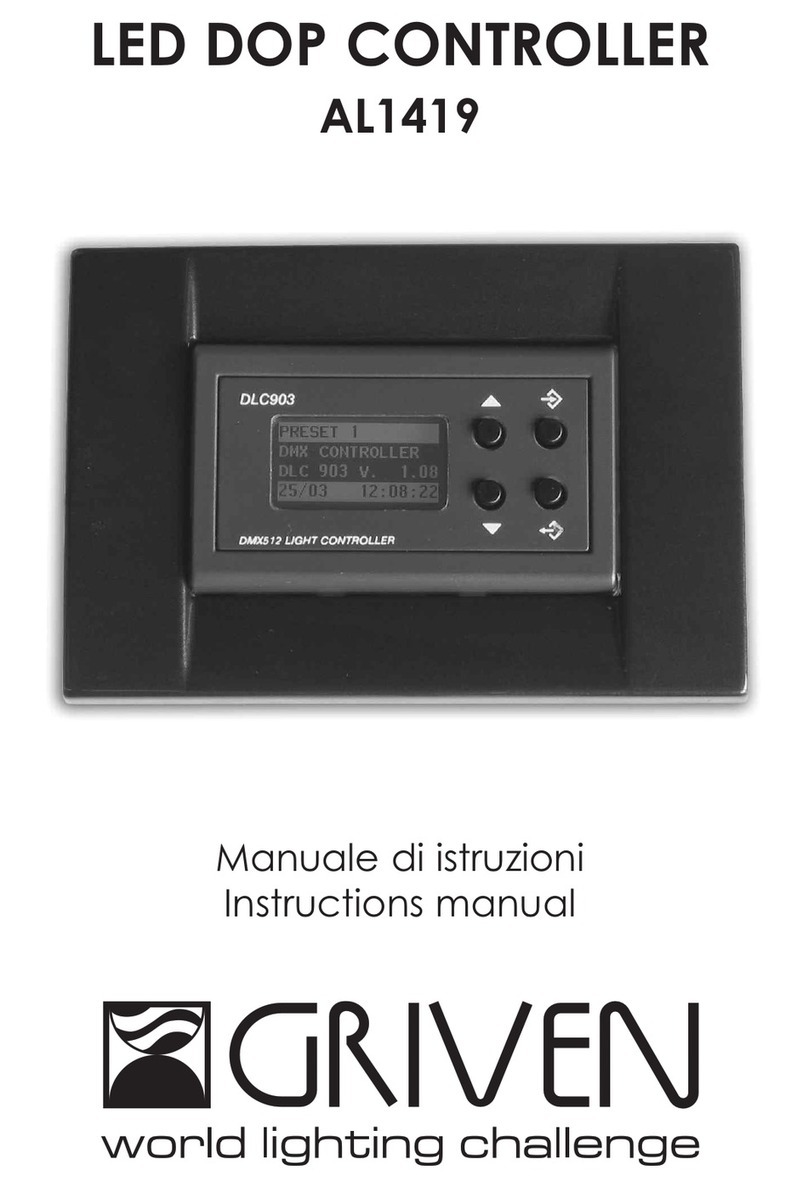
Griven
Griven AL1419 instruction manual
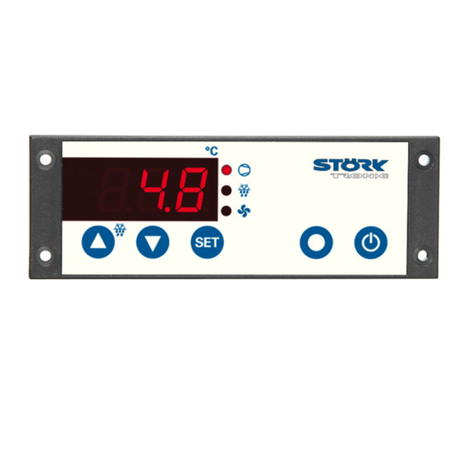
STORK TRONIC
STORK TRONIC ST121-KD1KAR.112 manual

United Electric Controls
United Electric Controls 120 Series Installation and maintenance instructions
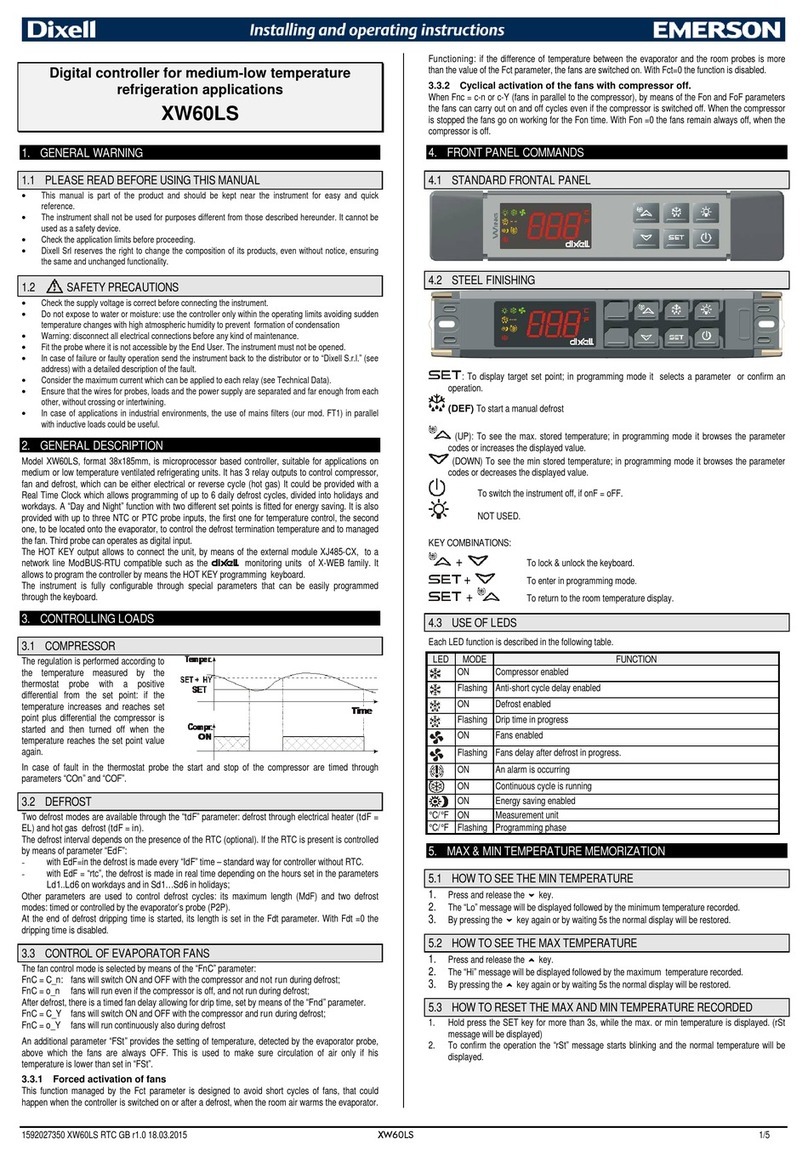
dixell
dixell XW60LS Installing and operating instructions
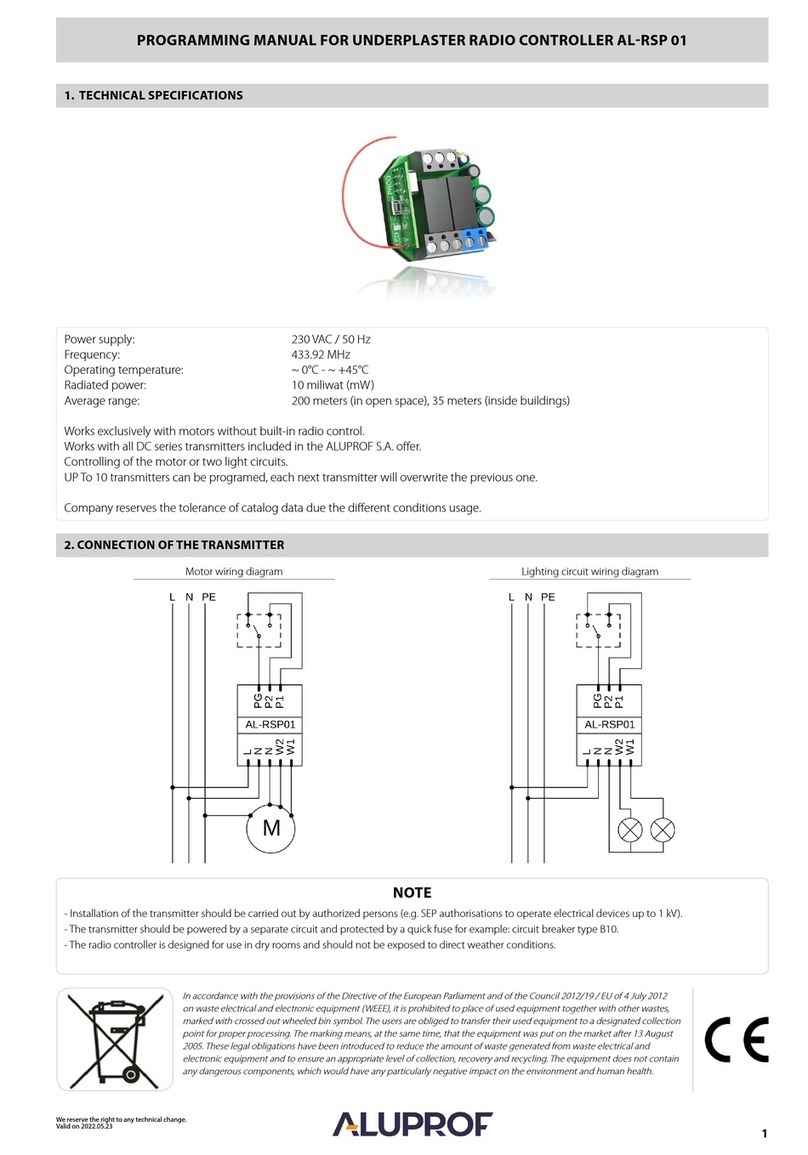
Aluprof
Aluprof AL-RSP 01 Programming manual
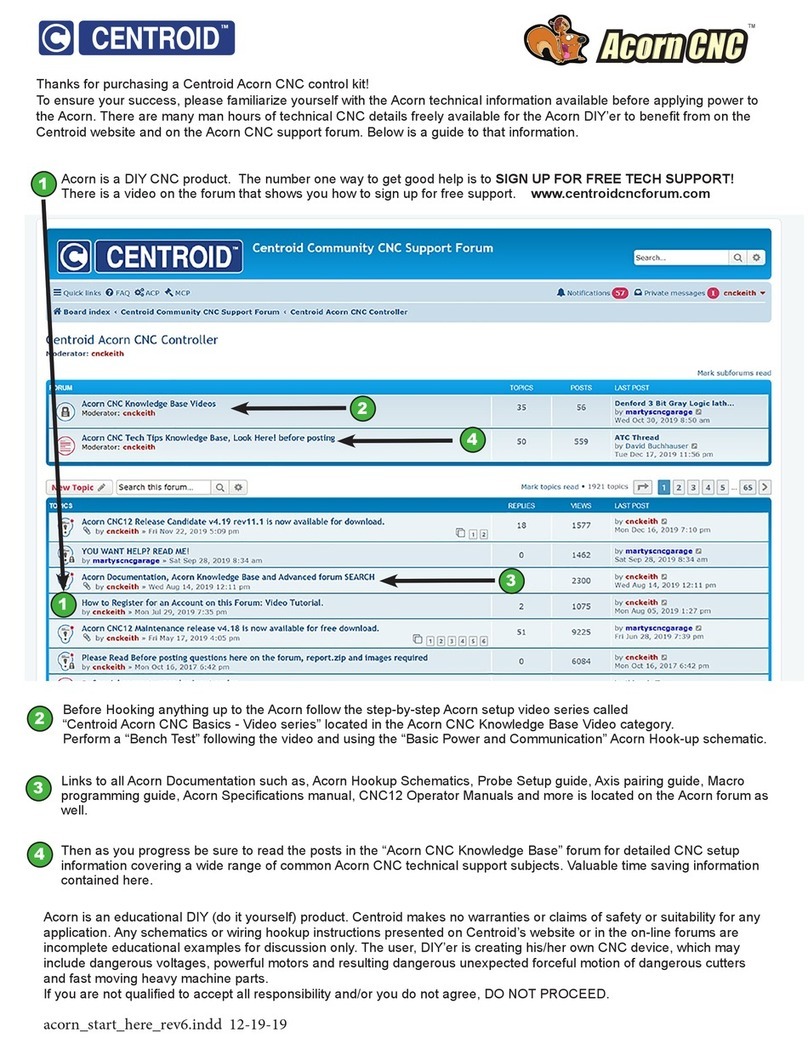
Centroid
Centroid Acorn CNC Start here
